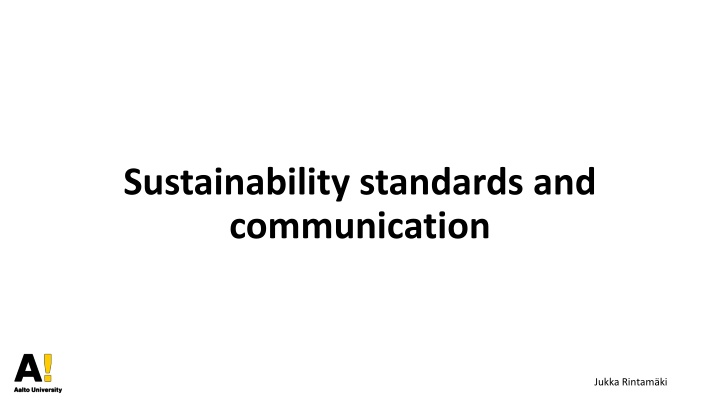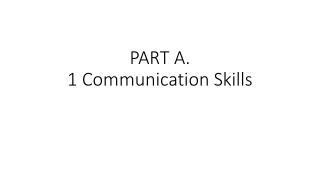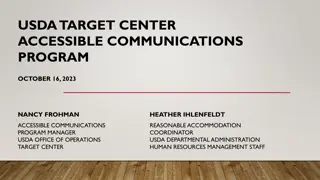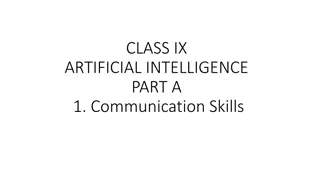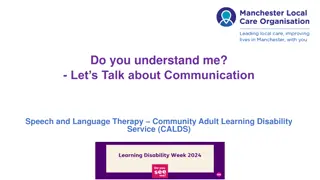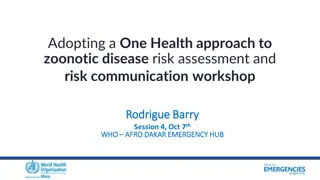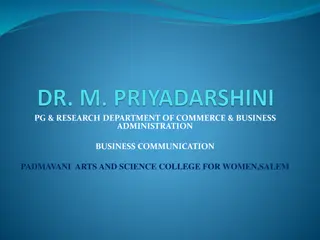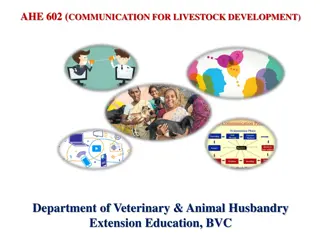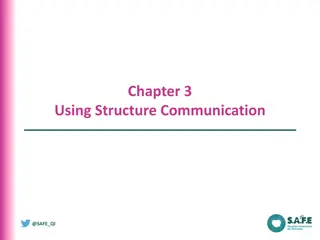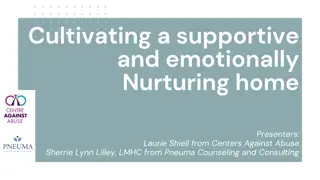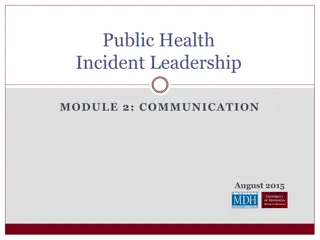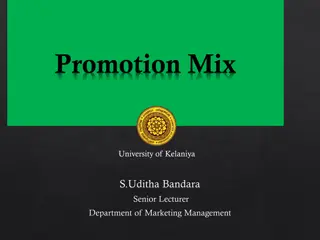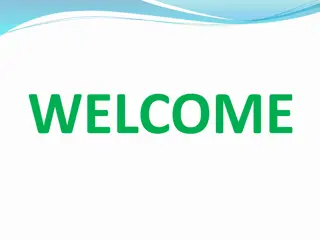communication
Emergence of sustainability standards, the push for international standards organizations, and the governance of sustainability on a global scale. Learn about the evolution of voluntary certification programs and the implications of soft law in regulating sustainability practices.
Download Presentation

Please find below an Image/Link to download the presentation.
The content on the website is provided AS IS for your information and personal use only. It may not be sold, licensed, or shared on other websites without obtaining consent from the author.If you encounter any issues during the download, it is possible that the publisher has removed the file from their server.
You are allowed to download the files provided on this website for personal or commercial use, subject to the condition that they are used lawfully. All files are the property of their respective owners.
The content on the website is provided AS IS for your information and personal use only. It may not be sold, licensed, or shared on other websites without obtaining consent from the author.
E N D
Presentation Transcript
Sustainability standards and communication Jukka Rintam ki
Re-capping last week What has stuck with you?
Expanding this logic: How to deal with institutional parasites Source Source: Rintam ki et al., 2024
Agenda What are sustainability standards and how did they come about? A few words about why communicate about them In-class task
What do you think was the problem that caused the push to start establishing international standards organizations? You guessed right: Deforestation In 1980s, NGOs organized consumer boycotts against retailers selling tropical woods based goods Some NGOs, such as Friends of the Earth attempted forming voluntary standards Deemed ineffective Government sanctioned certificates preferred Governments disinterested How did sustainability standards emerge? Source: Rasche & Waddock, 2017
New attempts at wide-ranging voluntary certification programmes WWF in the lead In 1993, environmental NGOs, industry representatives, and auditors met in Toronto, and arrived in an agreement The Forest Stewardship Council was formed Standards have since proliferated widely How did sustainability standards emerge? Source: Rasche & Waddock, 2017
How is sustainability governed globally? A basic framework for understanding different levels of governing corporate activity Source: Whelan, 2017
A type of soft law Not enforced by government etc. authorities, non-binding Non-mandated norms and expectations, typically more vaguely framed than hard law Rules for common and voluntary use, decided by one or several people or organizations (Brunsson, Rasche & Seidl, 2012) Specific types of rules, which therefore have regulatory capacity In what way? Because of the specificity of the rules, regulation is possible standards imply legitimacy, which enables easy participation in markets What are international sustainability standards? Source: Rasche & Waddock, 2017
These standards are often governed as multi-stakeholder initiatives (MSI) Consist of different groups: NGOs, firms, unions... These governance bodies regulate essential decisions Nature and content of standards Who is able to join What types of complaint and dispute mechanisms exist There are also standards that are not MSI s, but consist solely of business actors E.g. BSCI (Business Social Compliance Initiative) What are international sustainability standards? Source: Rasche & Waddock, 2017
Different types of sustainability standards Principle-based standards Broadly defined guidelines to steer participants' behavior with regard to social and environmental issues; foundational values and guidelines that business can use as a starting point for initiating actions around CSR No verification mech. Certification standards Focused on verified compliance; verification rests on certification procedures in which auditors assess a single factory or farm; producers that pass the audit are awarded a seal of approval for a specified period of time. Reporting standards Frameworks for disclosing information on a firm's social, environmental, and economic performance; reports are usually not verified by standard-setters. Process standards Give guidance on how to understand key terms that relate to CSR; outline management processes in relation to activities that impact social or environmental issues; some standards allow for certification. Description UN Global Compact OECD guidelines for Multinational Enterprises Principles for Responsible Investment Etc. Forest Stewardship Council Marine Stewardship Council Social Accountability 8000 Fair Labor Association Fairtrade Rainforest Alliance Clean Clothes Campaign Etc. Global Reporting Initiative Carbon Disclosure Project Greenhouse Gas Protocol Etc. ISO 14001 ISO 26000 AA1000 Assurance Standard Examples of CSR Standards Source: Rasche & Waddock, 2017
What sorts of issues do sustainability standards deal with? Environmental issues: emissions, resource use (water, forests, energy, raw materials etc.), biodiversity, animal rights... Social issues Human rights issues: United Nations General Principles on human rights Labor rights (cover many human rights issues) ILO has set some core labor standards Freedom of association and the effective recognition of the right to collective bargaining The elimination of all forms of forced and compulsory labor The effective abolition of child labor The elimination of discrimination in respect to employment and occupation Source: Rasche & Waddock, 2017
Video: GOTS organic garment standard Try to keep track of some of the key things: 1. What is GOTS? 2. How does GOTS make sure its signatories follow its rules? 3. How is GOTS better than some other labels? Reflect: Why might companies want to use GOTS?
A few words on sustainability communication
Generate awareness, legitimacy Competitive advantage Reputational benefits New customer segments / funding access Higher margins Develop relationships with partners Potential broader reason: Stakeholders have a right to know about a company s sustainability profile Why report/ communicate about sustainability?
Relationship between communication and practice What do we want to understand? The degree to which sustainability communication matches sustainability practice? (Functional) The degree to which sustainability communication generates sustainability practice? (Formative) Sources: Girschik, 2018; Morsing et al., 2020; Winkler et al., 2020
Takeways from the formative approach to sustainability communication How helpful is it to view sustainability as aspirational talk ? How do we distinguish aspirational from non-aspirational? Are commitment processes quick enough for what we need? Regardless, we need to recognize the role of communication in organizational sustainability processes and outcomes! Sources: Christensen et al., 2013
References Christensen, L. T., Morsing, M., & Thyssen, O. 2013. CSR as aspirational talk. Organization, 20(3): 372 393. Gilbert, D. U., Rasche, A., & Waddock, S. 2008. Accountability In A Global Economy: The Emergence of International Accountability Standards to Advance Corporate Social Responsibility. Business Ethics Quarterly, 18(1): 148 150. Girschik, V. 2020. Shared Responsibility for Societal Problems: The Role of Internal Activists in Reframing Corporate Responsibility. Business and Society, 59(1): 34 66. Morsing, M. 2017. CSR communication: What is it? Why is it important? In: Rasche, A., Morsing, M. & Moon, J. (Eds) Corporate social responsibility: Strategy, communication, governance. Cambridge University Press. Rasche, A. & Waddock, S. 2017. Standards for CSR: Legitimacy, Impact and Critique. In A. Rasche, M. Morsing, & J. Moon (Eds.), Corporate Social Responsibility: Strategy, Communication and Governance. Cambridge University Press. Rintam ki, J., Parker, S. & Spicer, A. 2024. Institutional parasites. Academy of Management Review, in print. Schoeneborn, D., Morsing, M., & Crane, A. 2020. Formative Perspectives on the Relation Between CSR Communication and CSR Practices: Pathways for Walking, Talking, and T(w)alking. Business and Society, 59(1): 5 33. Whelan, G. 2017. Political CSR: The Corporation as a Political Actor. In A. Rasche, M. Morsing, & J. Moon (Eds.), Corporate Social Responsibility: Strategy, Communication and Governance. Cambridge University Press. Winkler, P., Etter, M., & Castell , I. 2020. Vicious and Virtuous Circles of Aspirational Talk: From Self-Persuasive to Agonistic CSR Rhetoric. Business and Society, 59(1): 98 128.
In-class task: Getting familiar with different standards Each of the groups will be given one standard to work with Describe the standard, and provide a critical analysis What kind of a standard is it? What are the benefits? Potential problems? Critical evaluation? Signalling theory Credibility Verifiability Understandability Imitability Present a case example Case standards (organizations) UN Global Compact Fairtrade Global Reporting Initiative ISO14001 CSDDD Preparation: 40 minutes Presentations: 5 minutes each Take notes of each others presentations Similarities, differences?
